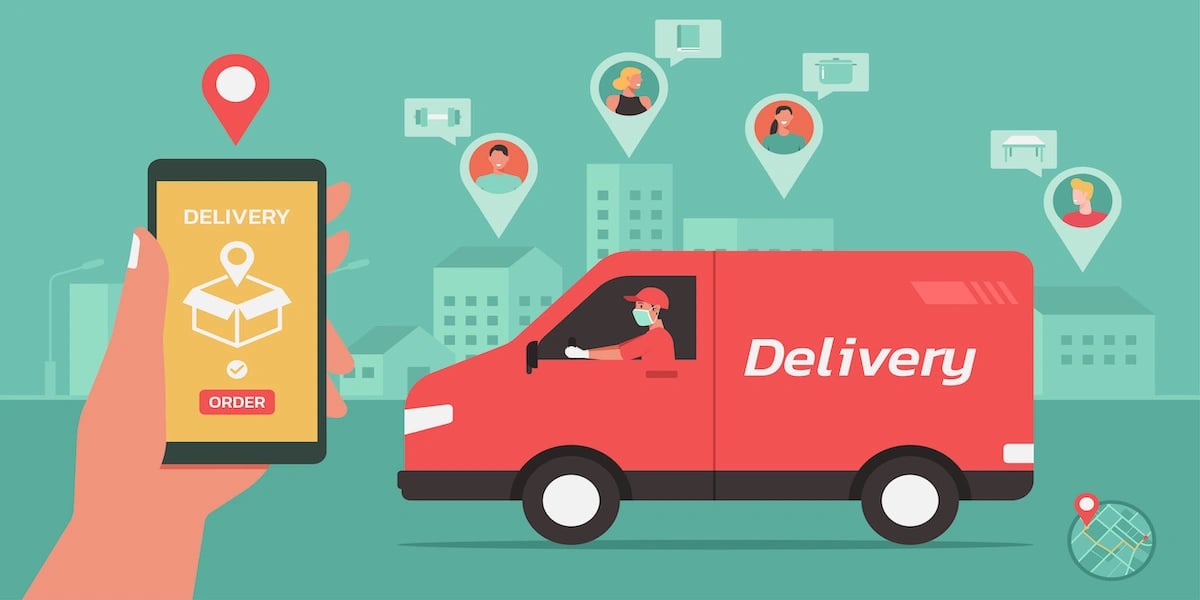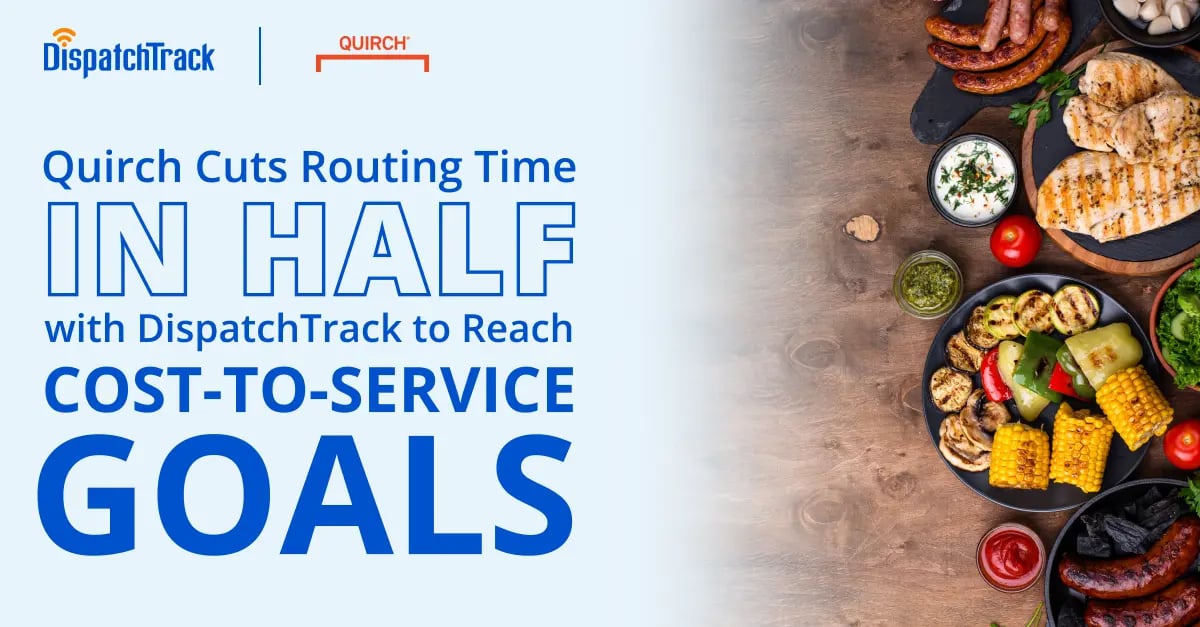So much depends on your delivery system that just the thought of upgrading it can cause headaches. But for modern distributors and delivery organizations, often the only way to find new efficiencies and make your delivery operations more cost effective is to update the tools you’re using—as fuel costs fluctuate, customer orders become less predictable, and the driver shortage continues apace, businesses are more and more frequently trying to find ways to do more with less.
 The question is: how can you tell whether it’s actually time to move on to a new delivery system? When do potential benefits of new technology outweigh the change management concerns and implementation efforts that tend to come with big change? Here are a few signs that it might be time:
The question is: how can you tell whether it’s actually time to move on to a new delivery system? When do potential benefits of new technology outweigh the change management concerns and implementation efforts that tend to come with big change? Here are a few signs that it might be time:
1. Rerouting Is a Nightmare
One of the biggest differences between the legacy technologies that were popular in the last decade—particularly in the food and beverage space—and more modern delivery management solutions is the speed and ease of routing and rerouting. For many businesses who haven’t updated their routing technology recently, creating route plans is an incredibly time- and labor-intensive task that can even require outside specialists to come in and get the software to actually produce routes that meet their business needs.
This is something that a lot of organizations just live with; they do the best they can with the routes they have, and they try to get by without new routes for months on end. The trouble with this is that it results in route plans that are much less efficient than they could be, not to mention much less adaptable and responsive. For B2B delivery organizations that are making a lot of recurring deliveries, the issue here might not jump out to those involved in day-to-day planning and execution. But even businesses that mostly run static routes need to adapt constantly to changing customer needs and expectations, which makes the ability to perform quick reroutes absolutely crucial. If your delivery software isn’t offering you that ability, it’s time to look for a replacement.
2. You Can’t Easily Measure Delivery Costs
A surprising amount can go into determining your actual cost to serve your customers. Sure, there’s the driver’s time and labor, plus the fuel that’s consumed going to a particular stop. But you also have to think about the back-office time spent on things like sending customers notifications—as well as the cost to send salespeople and merchandisers to follow up with clients before, during, or after the delivery. Without the right tools, getting the complete picture can be a challenge.
With the right tools, on the other hand, this is something you can automate. By collecting delivery data automatically and analyzing it after the fact, the right solution can enable you to quickly see cost-per-case, cost-per-stop, and cost-per-route. You can even estimate these last mile delivery costs at the planning stage. Why is this worth investing in? Because it means that you can work to stop making unprofitable stops.
3. Cross-Functional Coordination Is Difficult
Speaking of sales and merchandiser visits: one of the biggest challenges that many B2B delivery and service organizations face is coordinating between different functions and teams. Often, sales, delivery, merchandising, customer support, service scheduling, or other areas use their own technology in their own silos—resulting in customer service that’s fragmented and hard to optimize.
To provide the best possible service to your customers, you need a delivery system that enables you to tear down these silos and create visibility between all of the different touch points that ultimately impact your customers. This gives you the ability to make sure that if a delivery is in danger of running late, you can send a salesperson over to the delivery site to smooth things over. By the same token, if you’re working in an industry that has regulations around when merchandisers can and can’t stock product, you can make sure that your personnel across teams are showing up at the right time.
With this kind of cross-functional coordination, you can take a bird's eye view of the experience you’re offering customers. From there, you can boost customer delight with smarter planning and execution across the board.

4. You’re Not Getting As Much Out of Your Capacity as You Should
For businesses that are growing and scaling, it might not seem that unusual to be constantly adding to the number of trucks in your fleet or contractors/3PLs that you work with. At the same time, the driver shortage has created a lot of pain points around scaling in this way, so delivery organizations might be feeling it more than usual when the number of trucks at your disposal simply doesn’t seem to be enough.
Often, when it seems like you should be able to deliver all of your orders, the problem isn’t your fleet size—it’s your routing. Routes that haven’t been optimized result in fewer deliveries per truck per day. Conversely, delivery routes that have actually been generated by robust, AI-powered routing engines can ensure the maximum number of stops is packed onto each route. If your current delivery system isn’t delivering that level of optimization for you, it’s time to find one that can.
If you’re a retailer of a 3PL, dynamic routing should get the job done—as long as it’s configurable enough to enable you to adjust for the particulars of your business (e.g. by customizing different service times for different deliveries, setting different speeds for different drivers, etc.). But for distributors or wholesalers who are making recurring deliveries each week, this might require a hybrid routing model that blends static routing with dynamic route optimization.
5. You’re Still Running Your Delivery System On-Premise
The battle between cloud and on-premise is over—and for most use cases the cloud has won fairly decisively. For delivery systems in particular, the cloud has a number of advantages over on-prem deployments:
- Improved security
- More regular security updates
- Easier access to new features and functionalities
- Reduced internal IT costs
- Easier integration with other solutions
- Scalability without requiring extra hardware
- Greater data visibility
- Faster processing power for delivery planning and other tasks
Sure, on-prem deployments often have the advantage that they’re already in place and it would be disruptive to migrate them. But, in point of fact, some businesses find that they’re forced to migrate away from their existing on-prem deployments even to keep using the same software they’ve already paid for.
Running on-prem software without any ongoing vendor support can expose you to potential security vulnerabilities. It can also cut you off from straightforward integrations with other enterprise systems like ERPs and telematics solutions. In short, sticking with this kind of technology isn’t going to work in the long term—which is precisely why it’s usually a sign that it’s time to upgrade your technology.
In addition to all the benefits we sketched out above, cloud-based delivery systems give you the ability to effectively future-proof your delivery technology. By ensuring that you’re always connected and up-to-date, and that your technology continues to evolve over time, you can be sure that you’re not going to wind up with unsupported software that doesn’t play nicely with other solutions. When you combine that with some of the benefits of upgrading your delivery technology that we mentioned above, you’re looking at a recipe for happier drivers, happier customers, and an improved bottom line.